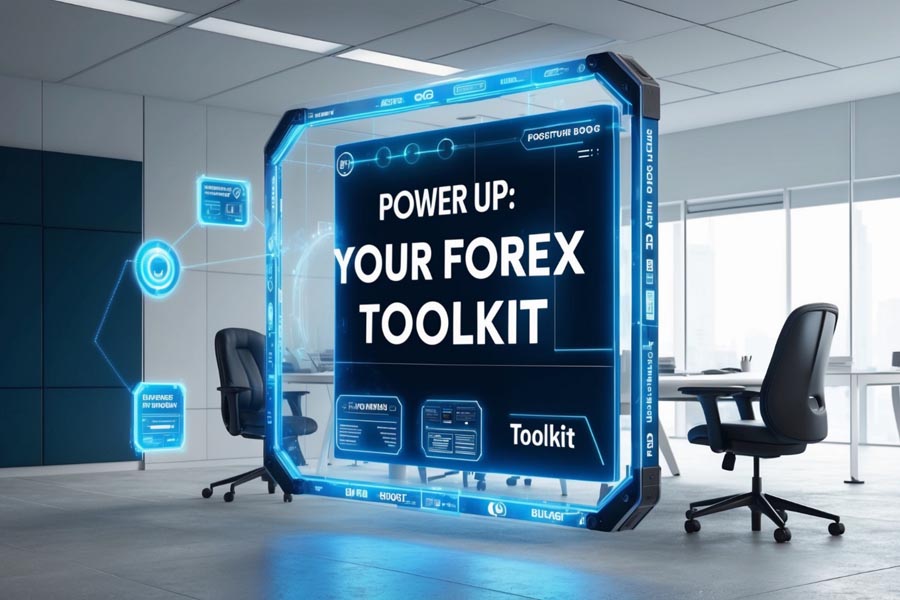When venturing into Forex trading with a $100 account, choosing the right lot size is crucial for success and longevity in the market. The ideal lot size for a $100 Forex account is typically a micro lot (0.01) or smaller, allowing for proper risk management and sustainable trading. This guide will help you understand why lot size matters and how to select the appropriate size for your account.
Lot size in Forex trading refers to the number of currency units you’re trading. It’s a critical factor that directly impacts your risk exposure and potential profits or losses. For a small account of $100, using the correct lot size can mean the difference between blowing your account in a few trades and steadily growing your capital over time.
In this comprehensive article, we’ll explore:
- The basics of lot sizes in Forex
- How to calculate the optimal lot size for a $100 account
- Risk management strategies for small accounts
- Trading approaches suitable for limited capital
- Psychological aspects of trading with a modest sum
Whether you’re a beginner or have some trading experience, this guide aims to provide valuable insights to help you navigate the Forex market effectively with your $100 account. We’ll also discuss the importance of choosing a reputable online forex broker, as they play a crucial role in providing the tools and conditions necessary for successful trading, especially when starting with a small account.
By the end of this article, you’ll have a clear understanding of how to choose the right lot size, manage risks, and develop a strategy to potentially grow your $100 Forex account. Let’s dive in and discover how to make every dollar count in the exciting world of currency trading!
Understanding Lot Sizes in Forex Trading
What is a Lot Size?
In Forex trading, a lot size refers to the number of currency units you’re trading. It’s a standardized quantity used to measure trade positions. Understanding lot sizes is crucial for managing risk and calculating potential profits or losses.
The concept of lot sizes originated from the interbank market, where large institutions trade substantial amounts of currency. As retail trading became more accessible, brokers introduced smaller lot sizes to accommodate individual traders with varying account sizes.

Types of Lot Sizes
There are four main types of lot sizes in Forex:
- Standard Lot: 100,000 units of the base currency
- Mini Lot: 10,000 units of the base currency
- Micro Lot: 1,000 units of the base currency
- Nano Lot: 100 units of the base currency
For a $100 Forex account, micro and nano lots are the most suitable options.
Standard Lot
A standard lot represents 100,000 units of the base currency. For example, if you’re trading EUR/USD, one standard lot would be €100,000. The typical pip value for a standard lot is approximately $10 for currency pairs where USD is the quote currency.
Mini Lot
A mini lot is one-tenth the size of a standard lot, representing 10,000 units of the base currency. The pip value for a mini lot is usually around $1 for USD-quoted pairs.
Micro Lot
A micro lot is one-tenth the size of a mini lot, or 1,000 units of the base currency. The pip value for a micro lot is typically $0.10 for USD-quoted pairs. This lot size is often ideal for traders with small accounts, as it allows for precise position sizing and risk management.
Nano Lot
Some brokers offer nano lots, which are one-tenth the size of a micro lot, or 100 units of the base currency. The pip value for a nano lot is approximately $0.01 for USD-quoted pairs. This lot size allows for extremely fine-tuned position sizing, perfect for very small accounts or for testing strategies with minimal risk.
Determining the Appropriate Lot Size for a $100 Forex Account
The 1% Rule

A golden rule in Forex trading is to never risk more than 1-2% of your account balance on a single trade. For a $100 account, this means risking no more than $1-$2 per trade. This rule is crucial for several reasons:
- Capital Preservation: By limiting your risk per trade, you ensure that a string of losses won’t wipe out your account.
- Emotional Management: Smaller risks per trade help manage emotions, preventing panic or overconfidence.
- Longevity: This approach gives you more ‘chances’ to trade, allowing you to weather drawdowns and learn from experiences.
Calculating Lot Size Based on Risk
To calculate the appropriate lot size:
- Determine your risk per trade (e.g., $1 for a $100 account)
- Set your stop loss in pips
- Use the formula: Lot Size = (Risk Amount) / (Stop Loss in Pips * Pip Value)
For example, if you’re trading EUR/USD with a 20-pip stop loss: Lot Size = $1 / (20 * $0.10) = 0.005 lots (half a micro lot)
Let’s break this down further:
- Your maximum risk is $1 (1% of your $100 account)
- You’ve determined a 20-pip stop loss based on your analysis
- The pip value for a micro lot in EUR/USD is $0.10
- Therefore, you can trade 0.005 lots to risk exactly $1 on this trade
This precise calculation ensures you’re adhering to your risk management strategy while maximizing your position size within those parameters.
Read More: Mastering Lot Size in Forex
Risk Management Strategies for Small Forex Accounts
Leverage and Its Impact
Leverage is a double-edged sword in Forex trading. It allows you to control larger positions with a small amount of capital, but it also amplifies both profits and losses. For a $100 account, use leverage cautiously. A 1:100 leverage might be suitable, allowing you to control $10,000 with your $100 account.
However, it’s crucial to understand that higher leverage doesn’t mean you should use all of it. Always base your position size on your predetermined risk per trade, not on the maximum position size your leverage allows.
Leverage Example
With 1:100 leverage on a $100 account:
- Maximum position size: $10,000 (100 * $100)
- Trading 0.1 lots of EUR/USD (€10,000)
- A 100-pip move would result in a $100 profit or loss, equal to your entire account
This example illustrates why proper position sizing is crucial, regardless of available leverage.
Setting Realistic Profit Targets
With a small account, focus on consistent small gains rather than aiming for large profits. A realistic target might be 1-2% profit per day or 10-20% per month. This approach has several benefits:
- Consistency: Smaller, regular profits compound over time.
- Reduced Pressure: Lower targets decrease the temptation to take excessive risks.
- Skill Development: Focusing on consistent small gains helps refine your trading strategy.
Importance of Stop Losses
Always use stop losses to protect your account from significant drawdowns. Place them at levels that align with your risk management strategy. Stop losses serve multiple purposes:
- Risk Control: They automatically limit your loss on a trade to a predetermined amount.
- Emotional Management: Having a stop loss in place can reduce anxiety and prevent emotional decision-making.
- Trade Planning: Setting a stop loss forces you to consider your exit strategy before entering a trade.
Consider using guaranteed stop losses if your broker offers them, especially during volatile market conditions or before major news events.
Trading Strategies for $100 Forex Accounts

Scalping
Scalping involves making numerous small trades throughout the day, aiming for small profits. This strategy can be effective with a small account, but requires discipline and quick decision-making.
Pros of Scalping:
- Potential for frequent small gains
- Reduced exposure to overnight risks
- Opportunities in various market conditions
Cons of Scalping:
- Time-intensive
- Requires very tight stop losses
- Can be stressful and lead to overtrading
Day Trading
Day trading involves opening and closing positions within a single day. It can be suitable for small accounts, as it minimizes overnight risks.
Pros of Day Trading:
- Allows for more thorough analysis than scalping
- Avoids overnight market risks
- Can capitalize on daily price movements
Cons of Day Trading:
- Requires dedication during trading hours
- May miss longer-term trends
- Can be affected by intraday volatility
Swing Trading
Swing trading aims to capture short to medium-term moves in the market. While it requires less frequent trading, it may involve higher per-trade risks.
Pros of Swing Trading:
- Less time-intensive than day trading or scalping
- Can capture larger market moves
- Allows for more comprehensive analysis
Cons of Swing Trading:
- Exposes trades to overnight and weekend risks
- May require larger stop losses, impacting position size
- Fewer trading opportunities compared to shorter-term strategies
Read more: How much can I make with $100 in Forex?
Psychological Aspects of Trading with a Small Account

Managing Expectations
It’s crucial to have realistic expectations when trading with a $100 account. Focus on learning and developing your skills rather than making quick profits.
Remember, even professional traders started small – your $100 account is a stepping stone to greater things.
Set achievable goals, such as:
- Maintaining your account balance for the first month
- Achieving a small positive return in the second month
- Consistently implementing your trading plan
Dealing with Losses
Losses are an inevitable part of trading. Learn to accept them as learning experiences and always stick to your risk management plan. Consider these approaches:
- Keep a trading journal to analyze your losses objectively
- Use losses as opportunities to refine your strategy
- Remember that even successful traders have losing trades
Avoiding Emotional Trading
Emotional decisions often lead to poor outcomes. Develop a trading plan and stick to it, regardless of short-term results. Strategies to manage emotions include:
- Setting clear entry and exit rules before entering a trade
- Taking regular breaks from trading
- Practicing mindfulness or meditation to maintain focus
Tools and Resources for Small Account Traders

Demo Accounts
Before risking real money, practice on a demo account to refine your strategies and gain confidence. Use demo trading to:
- Test different lot sizes and their impact on your account
- Practice implementing your risk management rules
- Familiarize yourself with your chosen trading platform
Economic Calendars
Stay informed about important economic events that can impact currency pairs you’re trading. Key events to watch include:
- Interest rate decisions
- GDP releases
- Employment reports
- Inflation data
Technical Analysis Tools
Learn to use basic technical analysis tools like moving averages, RSI, and MACD to make informed trading decisions. Consider starting with:
- Simple Moving Averages (SMA) for trend identification
- Relative Strength Index (RSI) for overbought/oversold conditions
- Moving Average Convergence Divergence (MACD) for momentum analysis
How to Grow a $100 Forex Account
Growing a small Forex account requires patience, discipline, and a solid strategy. Here are some tips:
- Compound Your Gains: Reinvest your profits to gradually increase your account size.
- Focus on Risk Management: Consistent application of proper risk management will help protect and grow your account.
- Continuous Learning: Stay updated with market trends and continuously improve your trading skills.
- Start with Major Pairs: Focus on major currency pairs that typically have lower spreads and higher liquidity.
- Use a Reliable Broker: Choose a regulated broker with low spreads and minimum deposit requirements.
OpoFinance Services: A Reliable Partner for Small Account Traders
When starting with a $100 Forex account, choosing the right broker is crucial. OpoFinance, an ASIC-regulated broker, offers excellent services tailored for small account traders. Their competitive spreads and advanced trading platforms make them an ideal choice for beginners and experienced traders alike.

One standout feature of OpoFinance is their social trading service. This innovative tool allows new traders to follow and copy the trades of successful traders, providing an excellent opportunity to learn and potentially grow your $100 account more efficiently. By leveraging the experience of seasoned traders, you can gain valuable insights into successful trading strategies while minimizing the learning curve often associated with Forex trading.
Conclusion
Trading Forex with a $100 account is challenging but not impossible. By choosing the right lot size (typically micro or nano lots), implementing strict risk management, and developing a solid trading strategy, you can navigate the Forex markets effectively. Remember, the key to success lies in consistent learning, disciplined trading, and realistic expectations. Start small, focus on skill development, and gradually work your way up to larger account sizes and more significant profits.
Can I make a living trading Forex with a $100 account?
While it’s theoretically possible to grow a $100 account into a substantial sum, it’s highly unlikely to make a living from it immediately. Focus on learning and developing your skills first. As your account grows and your skills improve, you can gradually increase your trading capital and potential income.
What’s the maximum number of trades I should open with a $100 account?
There’s no fixed maximum, but it’s wise to limit your open positions based on your risk management strategy. If you’re risking 1% per trade, you shouldn’t have more than 2-3 open positions at a time to avoid overexposure.
Should I use EAs (Expert Advisors) or automated trading systems with a small account?
While EAs can be useful, it’s generally better to learn manual trading first with a small account. This helps you understand market dynamics and develop your own strategies. Once you’re more experienced and have a larger account, you can explore automated trading options.













